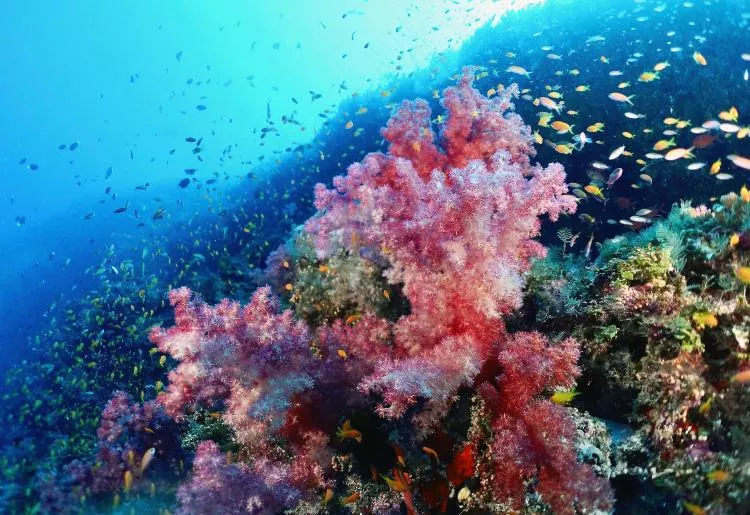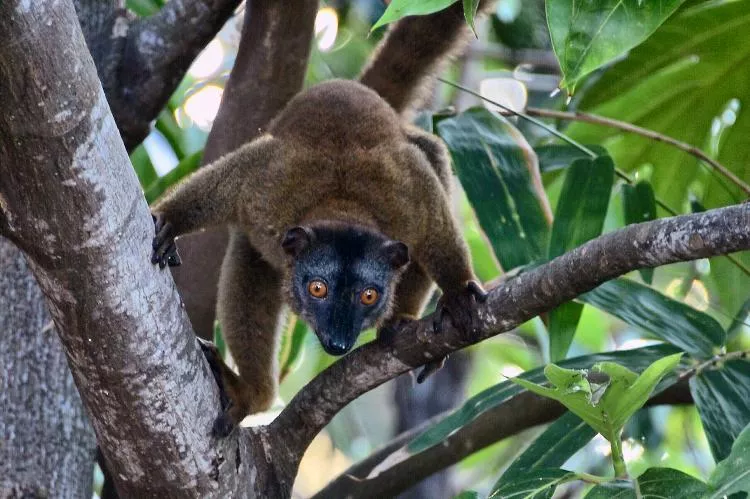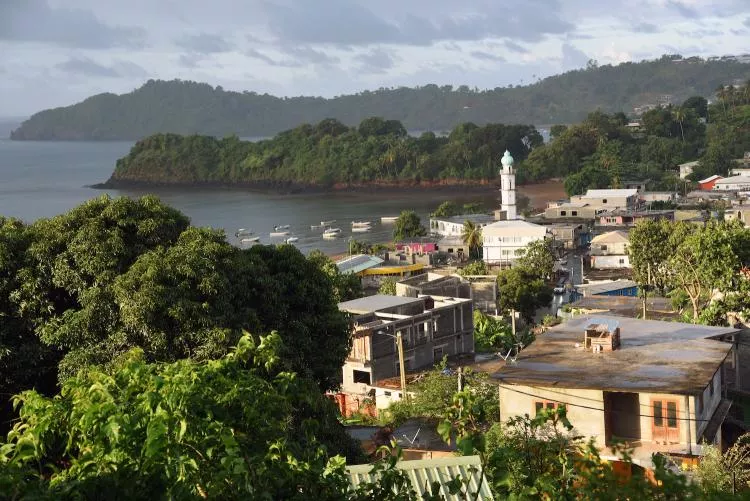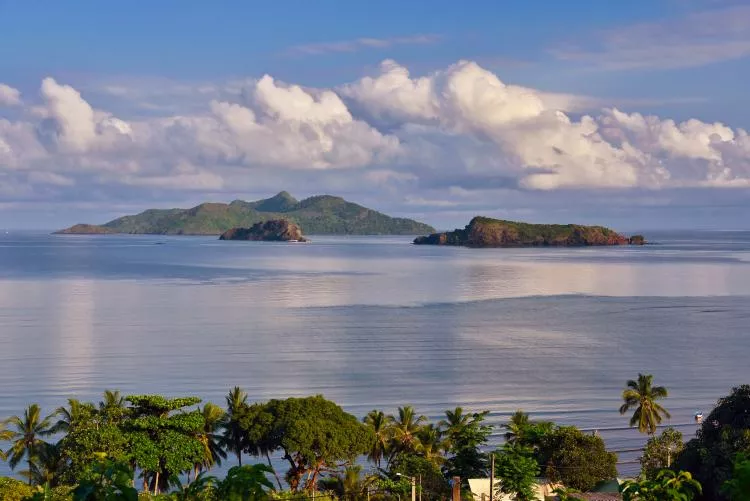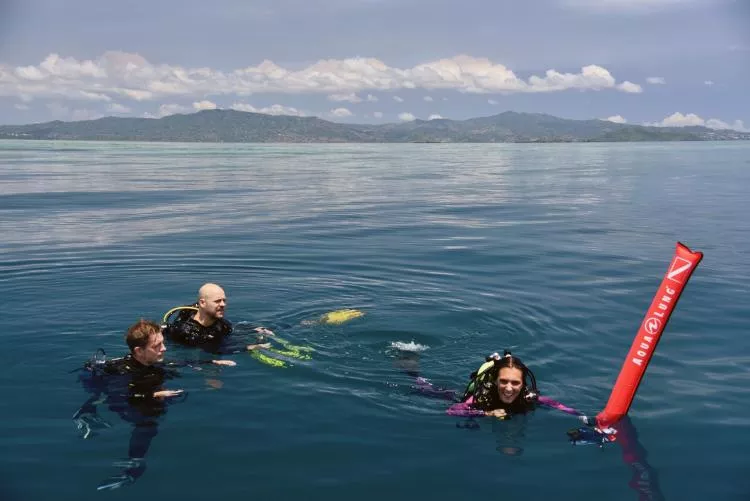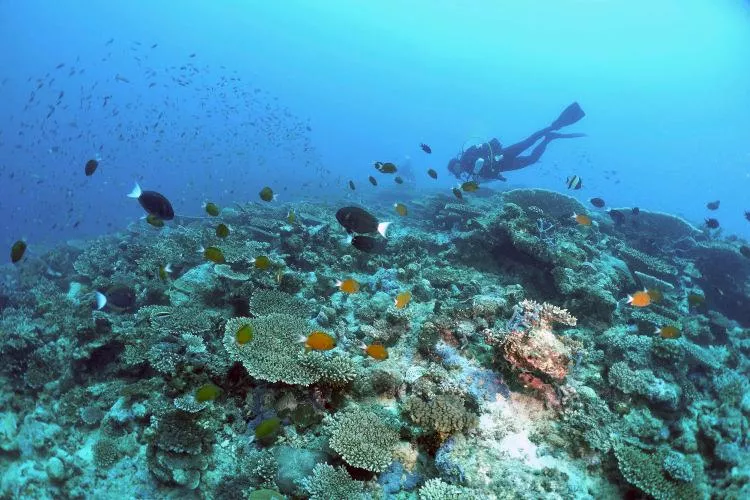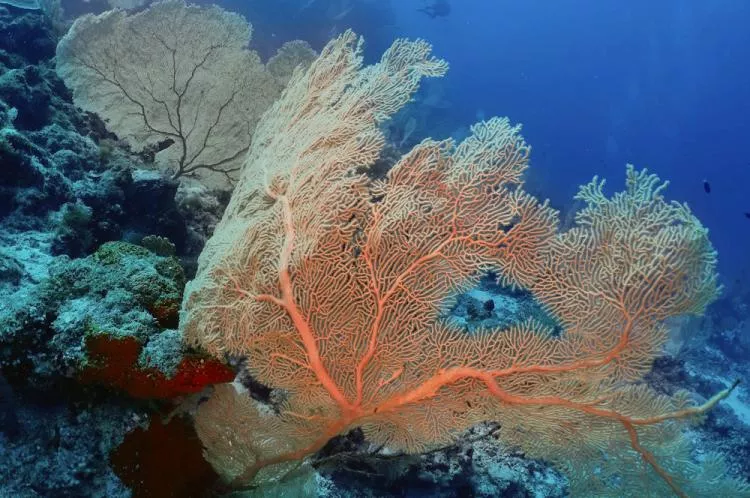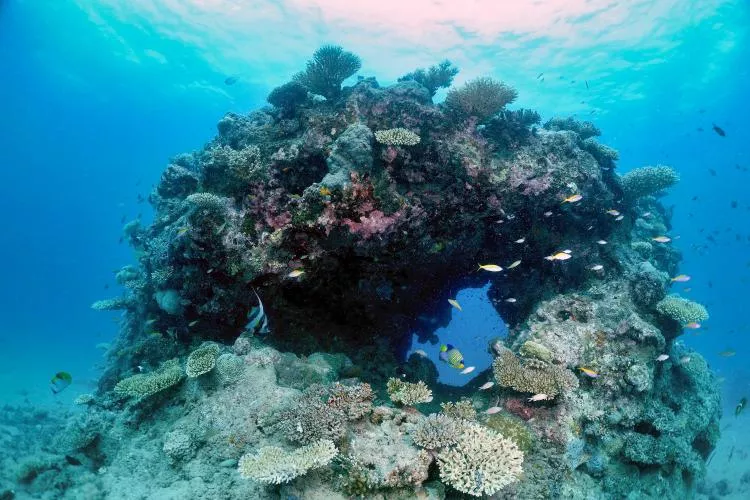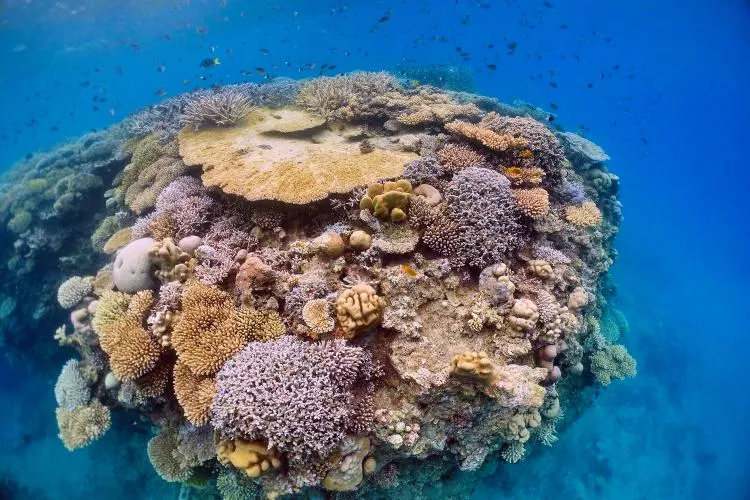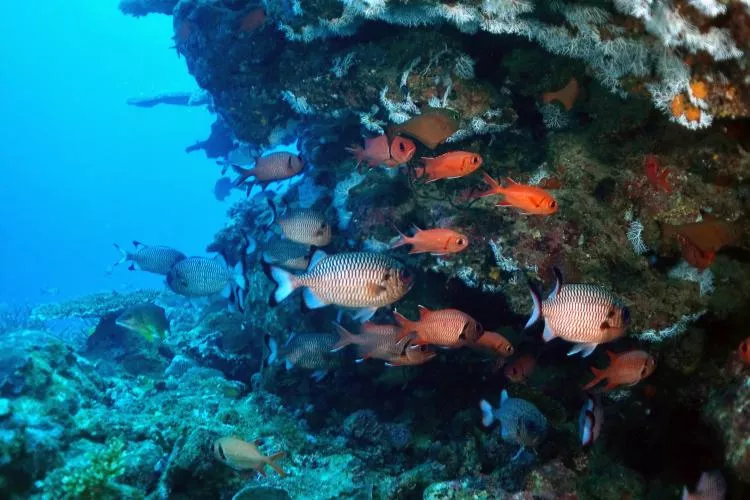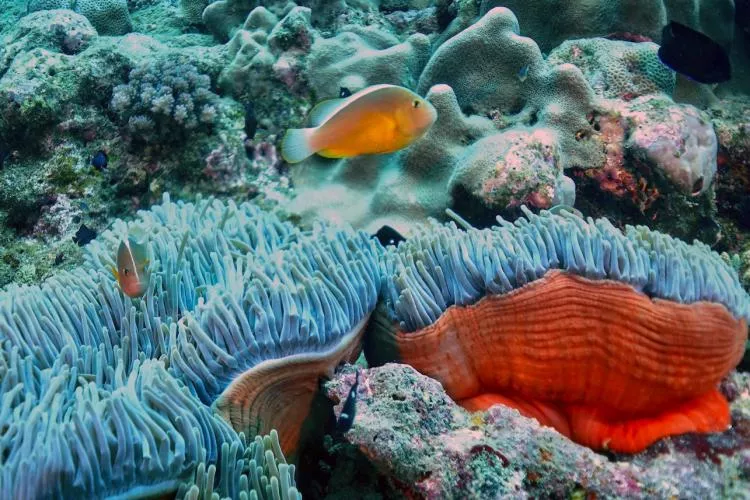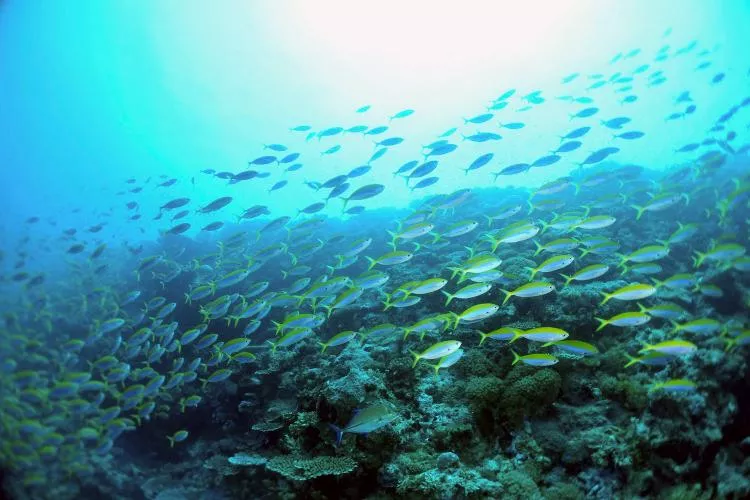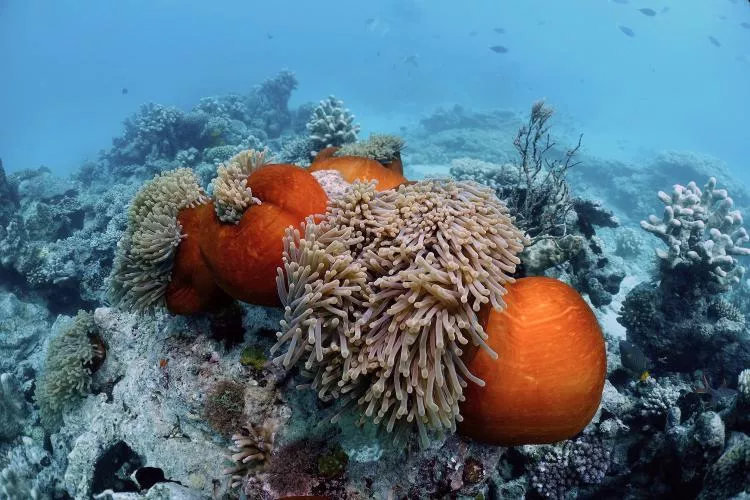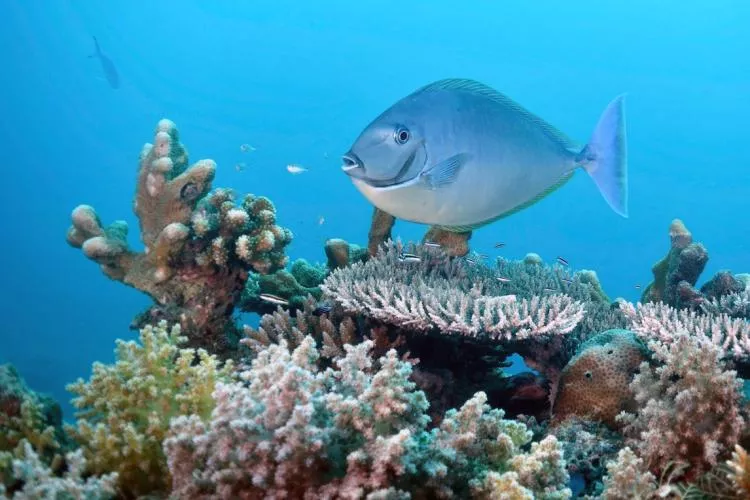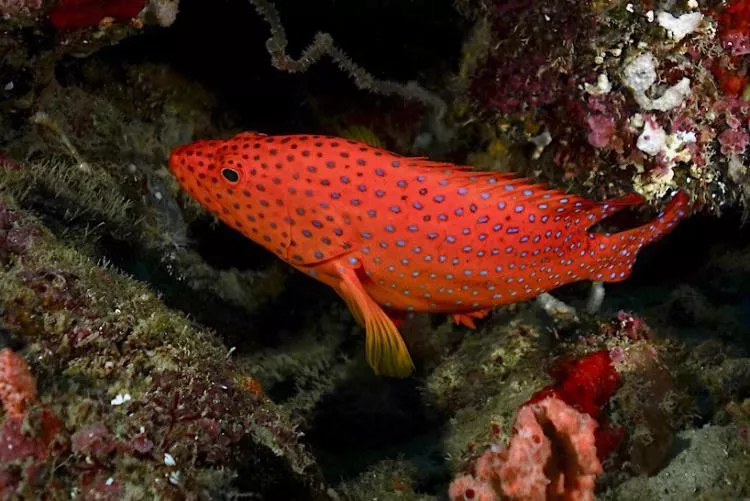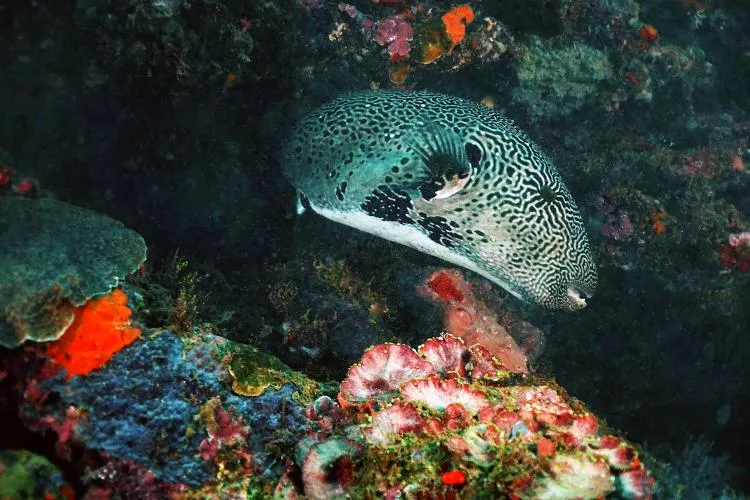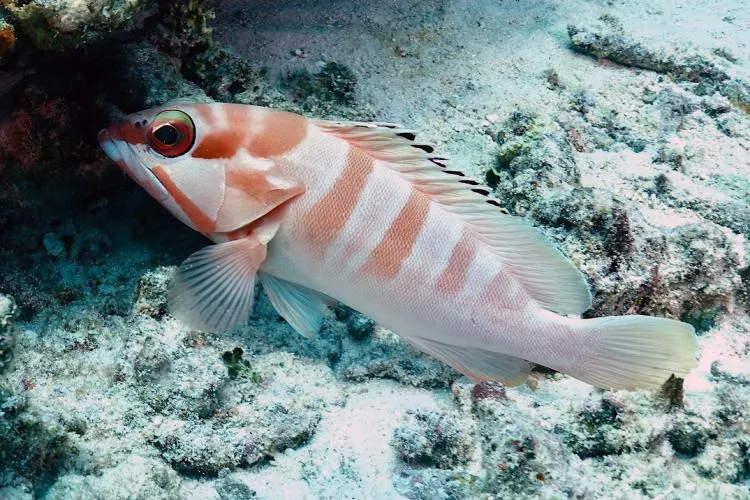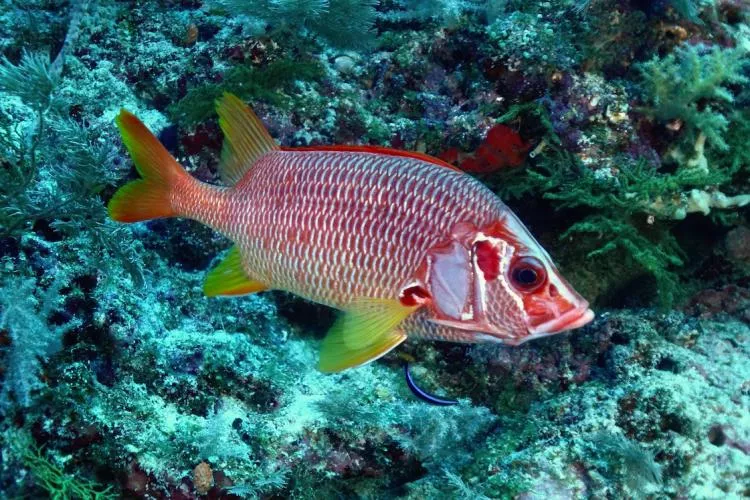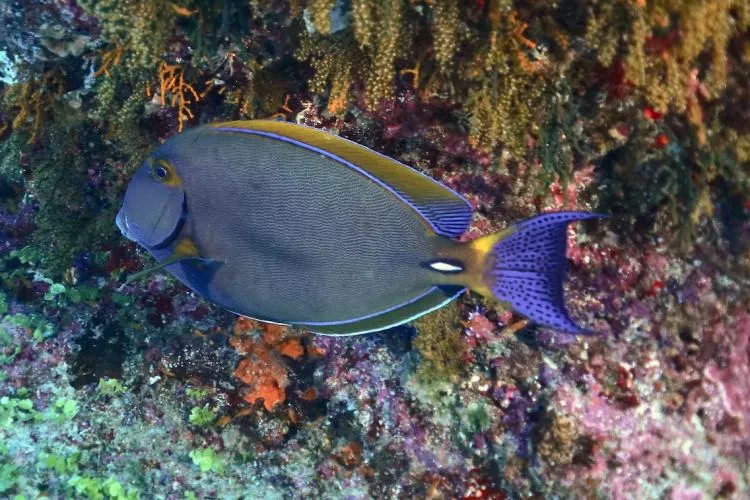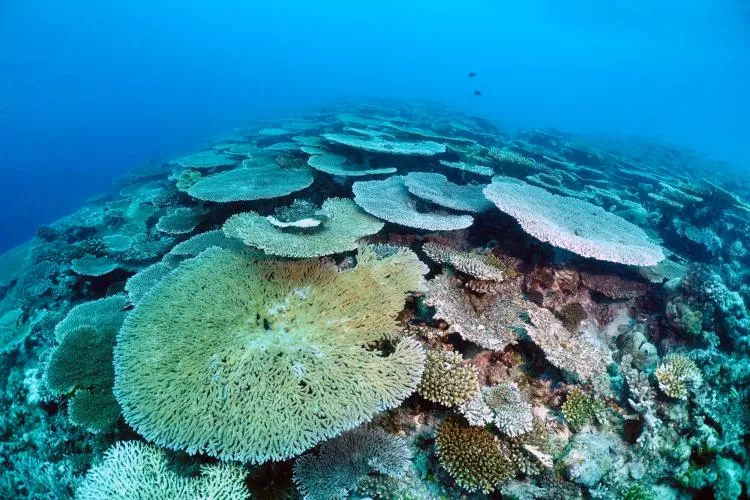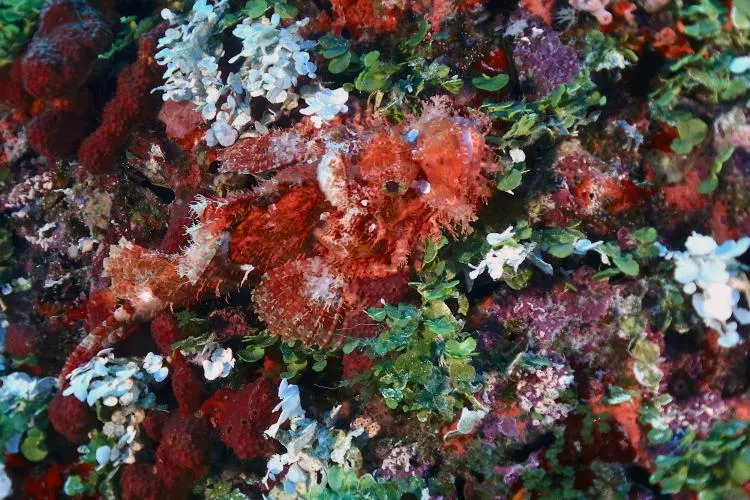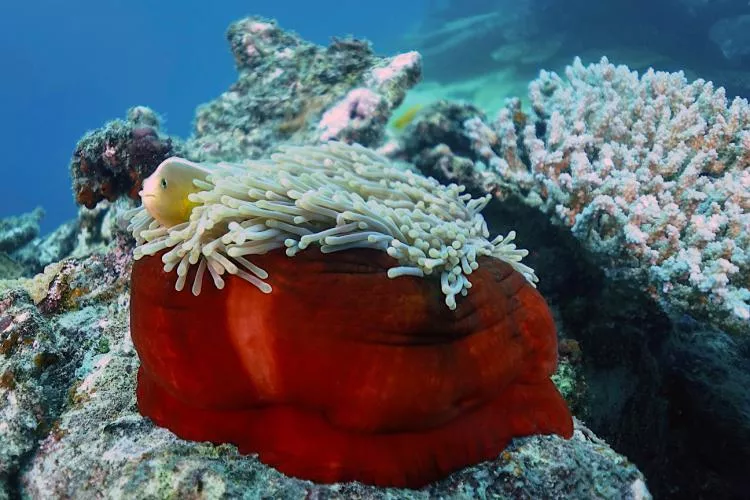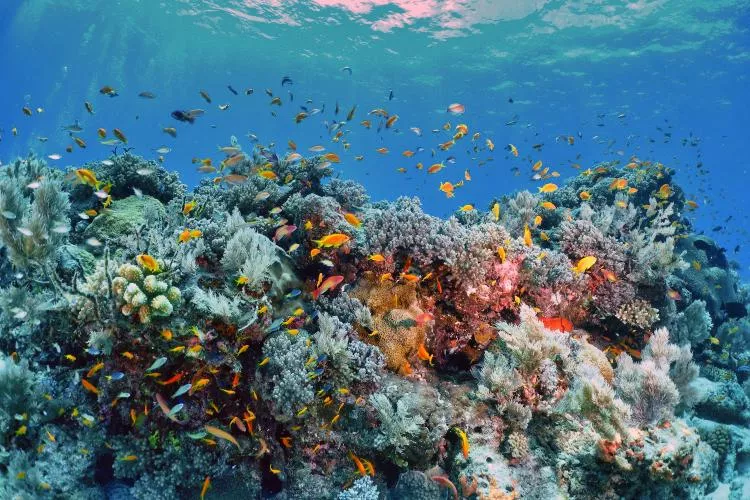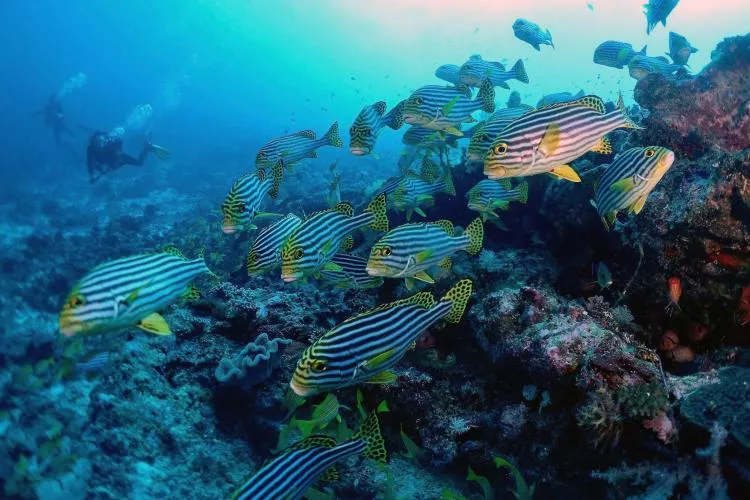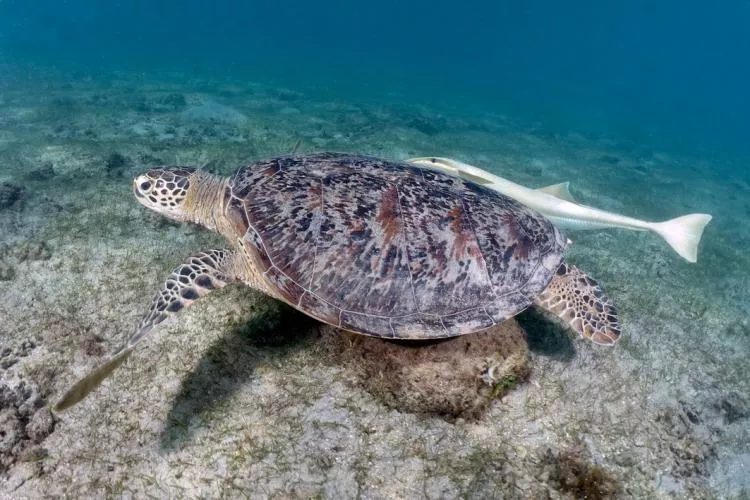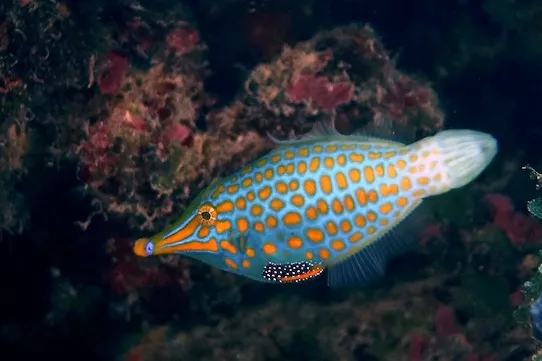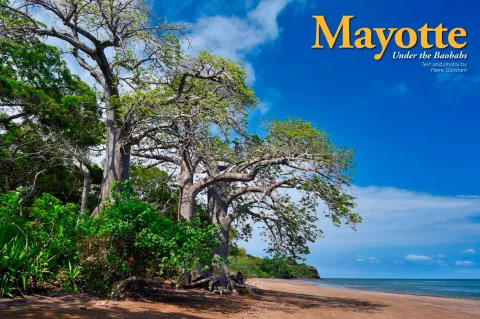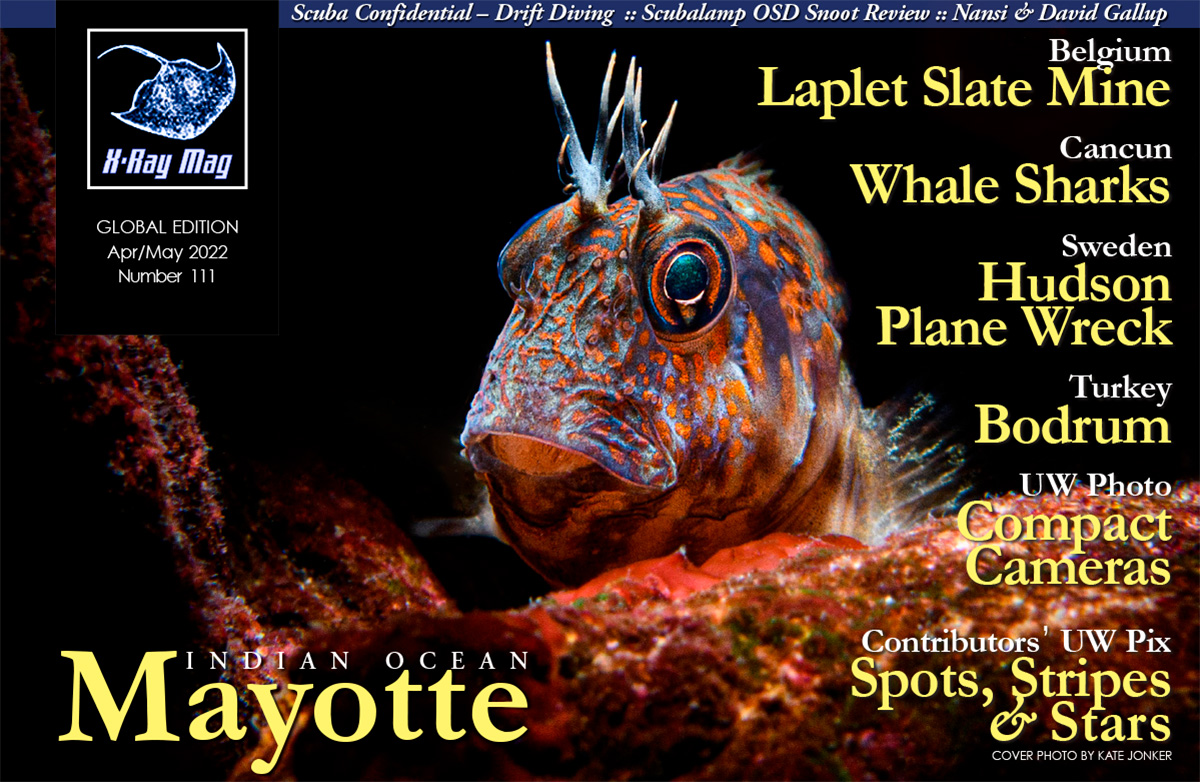The oldest of the four large Comoros Islands, Mayotte is 295km west of Madagascar and 67km southeast of Anjouan. An overseas territory of France, it is surrounded by an elliptical barrier reef, 160km long, encircling a lagoon 5km to 10km wide, with a maximum depth of 80m, a dozen passes and dotted with a hundred coral islets. Pierre Constant takes us along on his adventure to this unique and multicultural oasis with an intriguing diversity of species both above and below the waves.
Contributed by
The overnight Air Austral flight from Paris, via Reunion Island, landed in Dzaoudzi shortly after midday. The sun was high in the sky. Coming from wintery cold Europe, the temperature shock was immediate. With the 33°C temperature, it was hot and humid. For vaccinated passengers, a Covid-19 PCR test was not required upon arrival. Otherwise, one would have to quarantine for seven days.
Welcome to Mayotte, a French territory in the southern Indian Ocean. Scanning my surroundings upon exit, I located the parking lot across the road from the terminal building. When I checked in at the car hire agency, I was told with a smile, “You have been upgraded to a Fiat Panda!”
Pamandzi—also known as “Petite Terre”—was where one landed, but I needed to get across to Maore, otherwise known as “Grande Terre,” the main island. A short drive led to La Barge, the ferry boat, which would get me to the other side. With the waiting time in the queue, it took one hour to sail across.
Not wishing to spend my first night in the capital city of Mamoudzou, I headed south at once, along the eastern shores, bound for the village of Bandrélé.
Geography & geology
Located between northwestern Madagascar and northeastern Mozambique, at 12°50435” South latitude and 45°08’18” East longitude, in the Mozambique Channel, Mayotte has a land surface of 376 sq km. It is composed of two islands and about 20 islets, with a population of 29,0000 in 2022.
Volcanic activity—probably related to the East African rift—started 7.7 million years ago in the south (Mt Choungui, 594m, with a breached crater to the northwest) and 4.7 million years ago in the north (Mt Tsapéré, 572m, with a breached crater to the southeast). The most recent volcanic activity, Dziani crater lake on Petite Terre, would happened 7,000 years ago.
However, on 11 November 2018, a seismic event occurred 24km offshore. It was linked to the discovery of a new underwater volcano, located 50km to the southeast of Mayotte, at a depth of 3,500m. On 21 May 2019, this new volcano was 800m high and 5km across. It was the largest submarine event ever recorded on the planet.
History
While the history of early populations here remains uncertain, one study of early crops revealed that the Comoros were colonised by South Asian sailors, in the same way as Madagascar was. Between the 8th and 13th centuries, an influx of Austronesian sailors came from Southeast Asia, introducing various rice strains, mung beans and cotton.
Part of the Swahili coast culture, the island was populated from East Africa, with the arrival later of the Arabs, who imported Islam. A Maore sultanate was established in Mayotte in 1500. Three years later, Portuguese explorers visited (in 1503) and named it “Espiritu Santo” (Holy Spirit).
Anjouan, one of the Comoros Islands to the west, was nevertheless preferred by international traders for its deep harbour. The island’s name comes from the Arab Mawuti, meaning “island of death” (due to its dangerous reefs), which was changed to “Mayotta” by the Portuguese. Mayotte was often targeted by pirates and Malagasy raiders.
In 1832, the island was conquered by Andriantsoly, the former king of Iboina from Madagascar. It then fell to the sultanate of Mwali (Moheli Island) the following year and to the sultanate of Ndzuwani (Anjouan) two years later. Andriantsoly came back victorious in 1836 but found himself in a weak position against the sultans of the Comoros. He entered negotiations with the French, who were based on the island of Nosy Bé in Madagascar.
In 1841, Mayotte was purchased by the French, slavery was abolished, slaves were set free and sugarcane plantations were developed. The sugar crisis of 1883 to 1885 led to the closure of factories. In 1885, France took control of all the Comoros. After two cyclones razed the island in 1898, followed by a disastrous smallpox epidemic, the sugar industry was replaced by vanilla, coffee, copra, sisal and fragrant plants such as citronella, sandalwood and ylang ylang.
In 1974 to 1976, by referendum on the independence of the Comoros, Mayotte decided to remain French and broke away from the other Comoros Islands. In 2011, the island was elevated to the status of being an overseas department of France, following the 2009 referendum, which was approved by 95 percent of the voters.
Dive operator
Sakouli Beach, on the southeastern coast, is the location of the Jolly Roger 976 dive centre, just five minutes from Bandrélé and one hour south of Mamoudzou. Etienne, the friendly manager, introduced me to the operations and the 12-litre steel tanks. “Come tomorrow at 8:30 a.m.,” he said. There would be one dive in the morning and one dive in the afternoon.
Jolly Roger mostly dealt with “baptêmes” (i.e. dive novices) as well as “formations,” training both in the French system (FFESSM) and SSI courses. Those arriving in the month of September included newcomers who were young teachers from France, or nurses and people working in the medical field. A number of residents joined the club regularly.
As most beaches in Mayotte, Sakouli Beach was dotted with a row of old baobabs, of which the oldest and bulkiest could be well over 1,000 years old. These belong to the species Andansonia digitata with white flowers, which is the African baobab originating from Africa. Another indigenous species has been found around Milha in the northwest and Dapani in the southeast: the Andansonia madagascariensis with red flowers, which has obvious origins on Madagascar Island.
Jolly Roger takes divers to three main dive sites: the famous Passe en S (S-pass) south of Petite Terre, Îlot Bandrélé (across from Sakouli Beach), and Passe Saziley, to the far southeast. All the passes connect the lagoon with the open Indian Ocean surrounding it.
Passe en S. Handled expertly by the pilot Sidi—a native Mahorais, who was all smiles—and powered by a 300HP outboard engine, the 8.4m aluminium dive boat headed off on a very flat lagoon to Passe en S. A drift dive was planned on the outside of the pass. The water was 28°C, with no current.
I buddied up with two French biologists, Grégoire from a Mayotte lab and Frédéric from the Museum of Natural History in Paris. They were looking for a new species of flatworm, which was white with an orange ridge and a light blue girdle. “Not identified yet!” they beamed, all excited.
The reef flat was an extensive garden of table corals, with a drop-off from 15m to 40m. The fish life was mostly reef fish, with no apparent schools, besides golden chromis (Chromis pembae), with white tails; striped fusiliers (Pterocaesio trilineata); and yellowback fusiliers (Caesio xanthonota). The visibility was misty for an average dive. The yellow Bennett’s butterflyfish (Chaetodon bennetti) caught my attention, with its black spot, as well as the roundhead parrotfish (Chlorurus strongycephalus), which was light blue-grey in colour, with a yellow patch on the cheek. I surfaced before the two biologists, who eventually found their prized flatworm, which was now a prisoner in a little plastic tube: “One for science…” they exclaimed.
La Barge. Philippe Novel, Jolly Roger’s owner, from Marseille, offered to take me to La Barge, in the afternoon. It is a deep-water wreck at 36m, but due to strong current and poor visibility, we could not find it, and Philippe had to call the dive off at 32m.
Îlot Bandrélé. On the following day, our dive took place at Îlot Bandrélé, just five minutes away. The shallow reef was carved by canyons, caves and swim-throughs filled with fish, which turned out to be an entertaining dive. There were soldierfish, groupers, Regal angelfish (Pygoplites diacanthus), longfin bannerfish (Heniochus acuminatus), powderblue surgeonfish (Acanthurus leucosternon), spondylus oysters, and occasionally, bluefin jacks (Caranx melampygus).
Exploring offshore, a number of pinnacles and coral bommies were scattered over a vast expanse of white sand. I encountered the quite attractive saddle grouper (Plectropomus laevis), with black saddles over a white body and a yellow tail.
Passe en S—Take Two. On another occasion, at Passe en S, I was surprised by a hawksbill sea turtle grazing, with two longfin batfish (Platax teira) in tow. A magnificent red sea anemone hosted some orange skunk anemonefish (Amphiprion akallopisos).
Passe Saziley. A hard early-morning rain delayed our departure for Passe Saziley, which was a 20-minute ride to the southeast. The barrier reef was massive, with a white sandy bottom at 30m. It was a haven for schools of fusiliers: striped, yellowback, neon and moon. There were large leopard or peacock groupers (Cephalopholis argus), a shy Napoleon wrasse, a few species of unicornfish, including the ever-present elegant unicornfish (Naso elegans), with orange spines.
My observations of the eastern coast brought me to the conclusion that the reef had been extensively fished, considering the number of fishing lines and longlines found underwater. The Jolly Roger team was friendly and professional, and the new divers were delighted with their diving experiences.
Mtsamboro & Milha
Driving north one morning, I was back in Pamandzi to return the car and pick up a new one. My wandering continued on a snaky road along the seashore up north, then west to Mtsamboro.
I would be staying at a little lodge on the top of a hill, down a steep sloping street—home for the next few days. My little verandah overlooked the bay down below. The village minaret called for prayer at 5 p.m., amidst banana trees, coconut trees and luxuriant vegetation. It was exotic, all right.
Driving to Milha 10km away was another story. Not signposted, I missed the turnoff and had to turn around to try my luck here and there. When I finally located Happy Divers, the big gates were locked with a padlock. I had to call out into the night, only to have someone answering, “Allah o’Akbar!”
Banc du Boa. The morning dive was scheduled at Banc du Boa, a site well offshore. Soon after we departed, the outboard engine displayed signs of trouble, as there was a leak in the gas line. The dive was cancelled and replaced by an alternative dive on the house reef.
Here, visibility was poor, and there was nothing to rave about. Over lunchtime, Antoine, one of the partners, had the outboard engine fixed efficiently, and we could safely make it to Banc du Boa in the afternoon. “When you lack the right parts, you have to be creative and invent something,” said Cyril, the dive director.
Banc du Boa turned out to be a white sandy slope at the bottom of a reef wall. A prairie of garden eels was gracefully swaying in the gentle current at 33m. Wary of our approach, a bluespotted stingray took off in a cloud of sand. Larger pineapple cucumbers, Thelenota ananas, curled in their lazy aloofness, dotted the slope. Close to the wall decorated with gorgonians, a school of yellow-band or yellowstripe goatfish (Mulloidichthys vanicolensis) was hovering like a drifting balloon, joined at times by a small group of gold-spot bream (Gnathodentex aureolineatus). Bluefin jacks cruised by silently. The return to the boat was done over the top of the reef, which was a lively coral garden.
Other dive sites
Other similar dives with Happy Divers took place at Îlot Sable Blanc and Cocaine, where oriental sweetlips (Plectorhinchus vittatus) and a school of paddletail snapper (Lutjanus gibbus) were seen. A special mention must be made for the strikingly attractive palette surgeonfish (Paracanthurus hepatus), which was a vivid royal blue in colour, with black markings and a yellow tail. It was found flirting around stony coral heads of Pocillopora sp. (cauliflower coral). Karim and Khalifa were great instructors to dive with, well appreciated for their positive vibes.
Climate and weather
The rainy season, or kashkasini, stretches from November to the end of April, with the preponderance of northeast trade winds. With an interseason from April to May, temperatures are lower, and precipitation is reduced. The dry season, or kussini, extends from June to September, with southwest trade winds. Another interseason happens in October to November, when temperatures and humidity are on the rise.
Diverse species
With regard to the environment, 1,300 species of plants have been identified in Mayotte, half of those being endemic. The 30 officially protected areas represent 55 sq km (or 14 percent of Mayotte’s land surface). On 3 May 2021, the Forests of Mayotte National Nature Reserve (2,801 hectares) was created, which included Mt Mtsapéré, Mt Combani, Mt Benara and Mt Choungui.
A total of 140 species of birds are found on the island; however, there are only 15 species of mammals. Among others, there is the Malagasy civet, the tenrec and the brown lemur (Eulemur fulvus mayottensis), which was introduced by humans from Madagascar, ages ago. The native flying fox (Pteropus seychellensis comorensis) is found almost everywhere. The 18 species of reptiles are represented mostly by geckoes, skinks, chameleons and a few harmless endemic snakes in the mountains. In addition, there are 116 species of butterflies (of which 12 are endemic), 38 species of dragonflies and 23 species of land molluscs, which add to the diversity of fauna in the area.
Boueni
The coastal road kept winding along the western coast, all the way south to the Boueni peninsula. I passed by coves and beaches of ochre sand, mangrove areas, not to mention the ever-present silhouettes of giant baobabs, which seemed to have defied the passing of time. With its placid waters, the lagoon was like a mirror, flat and undisturbed, except for a few clouds drifting overhead.
N’Gouja Beach was well known for its population of green sea turtles, which come to graze on the seagrass beds. These creatures attracted a crowd of snorkellers and beachcombers on the weekends, as well as a number of divers, staying at the comfortable resort.
The resort of Le Jardin Maoré, with the attached dive centre, Le Lagon Maoré, has been a highlight of the south for the past 45 years. French residents from Mamoudzou come regularly on Saturdays and Sundays to dive the famous three passes of the south, which are considered to be the best diving in Mayotte: Passe aux Bateaux, Passe Sada and Passe Boueni.
These passes are roughly seven miles out on the western barrier reef and benefit from good sunlight and great visibility—a positive advantage for photographers. The coral structure was massive as expected, with a visually attractive coral garden, although it was lacking in colour as a whole. The diversity was nonetheless impressive.
Diving
The morning dive departed sometime after 8 a.m. The afternoon dive at 2 p.m. was always done inside the lagoon on Shira Rani Reef. There, the coral was still healthy and plentiful, but the visibility was affected, and there was much less fish life here than on the external barrier reef.
Nicolas, the dive director, was a tall, bearded fellow around 40, with long blond hair, who managed his team of five dive instructors with an iron hand. He had lived for five years in Mayotte (from 2000 to 2005), during which time he had operated a dive centre in Mamoudzou. Then, he spent 15 years in French Polynesia.
He reminded me of the strict French rules of the FFESSM. Divers must always stick to the group led by an instructor—unless one buddies up with another autonomous diver—and no solo diving would be tolerated. As an underwater photographer, this made me frown a bit, as I had been used to diving on my own for many years. To have to tag along at all times, when one is in search of photographic opportunities, is not always convenient nor pleasant.
Passe aux Bateaux. Powered by twin 200HP Yamaha outboard motors, the aluminium dive boat, which could accommodate 24 divers, headed out for a 20- to 30-minute ride to the barrier reef. There was incoming current, and we jumped overboard on the exterior of the Passe aux Bateaux.
Decorated with a few gorgonians, Tubastrea green coral hosted a lovely cloud of yellow and orange anthias or sea goldies (Pseudanthias squamipinnis). Queen (or redtooth) triggerfish abounded on the edge of the drop-off. Otherwise, it was rather quiet with the usual reef fish.
An octopus popped out of its hole here and a little school of black snapper (Macolor niger) crossed the scene. Oriental sweetlips (Plectorhinchus vittatus) hovered around a bommie, which acted as a cleaning station. Out of the blue, a grey reef shark (Carcharhinus amblyrhynchos) zoomed in on me along the wall, but veered off at a 90-degree angle, as I was about to take a shot. It was wary of people, for sure.
Judging by the number of old fishing lines present, one could surmise that the reef had been extensively fished for many years. What remained was for the starry eyes of novices and new divers, for whom everything was simply beautiful.
Dive instructor Youssouf pointed out a cave at 26m. Worth a look, there was a horizontal penetration of 10m, with a cloud of sweepers at the entrance. Towards the end of the dive, in the shallows of the reef flat, a school of spotted unicornfish (Naso brevirostris) and barred unicorns (Naso thynnoides) gathered artistically behind the dive guide.
As we headed back to N’Gouja Beach, a pod of playful spinner dolphins (Stenella longirostris) showed up. Nicolas drove in circles to attract the marine mammals closer, and everyone enjoyed the opportunity to take a few pictures.
Passe Sada. In contrast to the former one, Passe Sada, which was located farther north, was an enchantment of gorgonians and large sea fans on a slope. There were a lot of fire dartfish. A marble or round ribbontail ray (Taeniura meyeni) rested on a ledge, and Maori or humphead wrasse drifted gracefully into the blue.
Passe Boueni. “My favourite site, and the prettiest, is Passe Boueni!” declared Nicolas, enthusiastically. I could only agree.
The corals of the barrier reef were extremely enchanting, including Acropora table coral as well as Pocillopora sp., Pavona sp., Porites sp. and Fungia species. “We’ll dive down to 40m,” said Youssouf. Deep down, I marvelled at the profusion of soft corals (Dendronephthya sp.), which were white, red and purple in colour, with lots of happy anthias. There was a scrawled filefish, a few red snapper (Lutjanus bohar) and the odd bluefin jack on the hunt. Eventually, a large school of paddletail snapper appeared, undulating over the reef like a wave, although they were shy of divers.
Resort development
Nicolas’s wife Marion was the director of Le Jardin Maoré, the oldest tourist resort in Mayotte (operating since 1976). Aligned along the beach behind huge baobab trees and under the cover of colourful flamboyant trees (Delonix regia) with red flowers, the little bungalows with verandahs were comfortable, albeit a bit small. Admittedly, they showed their age and had done their time.
However, a new project was actively under construction and due to open in October to November 2022. The new Jardin Maoré would have seven superior wooden bungalows on stilts with large verandahs, as well as 21 cheaper rooms for divers in a big longhouse on the slope behind the bungalows. A new elevated restaurant with open terrace would be added, as well as a new dive centre with a terrace, reception area, equipment room, compressor room and classroom for courses. “This flashy dive centre, using nitrox, will be operational as early as February 2022,” assured Nicolas.
Natural parks
Adjacent to the Glorioso Islands Marine Natural Park to the northeast, the Mayotte Marine Natural Park was established in January 2010. With a surface area of 68,300 sq km, it hosts 760 species of fish, 581 species of arthropods and 450 species of cnidarians. It is home to 24 species of marine mammals, including whales, dolphins and a small population of dugongs. It is estimated that 2,000 sea turtles live inside the lagoon, all under protection, of course, but poaching is still rampant.
Afterthoughts
Mayotte may be the largest enclosed lagoon in the world—despite its 12 passes—and is an obvious pride to its people. Regardless of the abuses that may have been done to it in past years, what remains untouched today is what you can see from the sky—a visual feast for the eyes, turquoise blue in colour.

